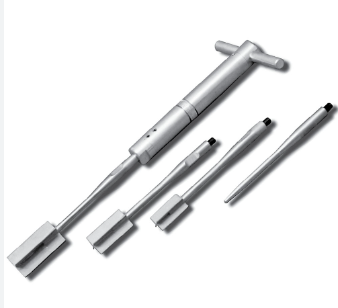Shear Strength of Soil
Introduction:
Understanding the shear strength of soil is crucial in various engineering and construction projects. The vane test, a widely utilized method, serves as an effective tool to determine the soil’s resistance to shear forces. In this blog, we will delve into the procedures involved in the vane test, explore how it aids in unlocking valuable insights into the shear strength of soil, and discuss the advantages, observations, and calculations associated with this method.

What is Shear Strength and Why is it Important?
Shear strength is a fundamental property of soil that defines its ability to withstand internal and external forces that act parallel to its surface. This property is vital in geotechnical engineering as it influences the stability of structures such as foundations, slopes, and retaining walls. Accurate assessment of shear strength helps engineers make informed decisions regarding design and construction, ensuring the safety and longevity of infrastructure projects.
The Vane Test: A Brief Overview:
The vane test is a widely accepted method for measuring the undrained shear strength of cohesive soils, which include clays and silts. The test involves the use of a cylindrical vane that is inserted into the soil, and the torque required to turn the vane is measured. This torque is directly related to the shear strength of the soil.
Procedure for Conducting the Vane Test:
1. Equipment Setup
– Ensure the vane apparatus is clean and in good working condition.
– Calibrate the equipment to ensure accurate measurements.
2. Sample Collection
– Extract undisturbed soil samples from the test site using appropriate methods to preserve the soil structure.
– The samples should be cylindrical in shape and have a diameter similar to that of the vane.
3. Sample Preparation
– Trim the soil sample to fit the vane apparatus.
– Saturation of the sample may be necessary for accurate undrained shear strength testing, especially in cohesive soils.
4. Insertion of Vane
– Insert the vane into the soil sample at the desired depth and orientation.
– Make sure the vane is fully embedded in the soil to ensure accurate results.

5. Torque Measurement
– Gradually rotate the vane using the torque applicator.
– Record the torque required to turn the vane, which is indicative of the soil’s shear strength.
Observations:
1. Shear Plane Formation
– Observe the formation of a shear plane within the soil sample during the vane rotation.
– Note any signs of deformation or failure within the sample.
2. Torque Response
– Monitor the torque response throughout the test to identify any variations or peaks.
– Sudden increases in torque may indicate the initiation of shear failure.
Calculations:
1. Undrained Shear Strength (Su)
– Calculate the undrained shear strength using the measured torque (T) and vane dimensions.
– Su = T / (π * D * H), where D is the vane diameter and H is the height of the vane.
Advantages:
1. Quick Results
– The vane test provides rapid results, making it a cost-effective option for preliminary site investigations.
2. Suitability for Cohesive Soils
– Particularly useful for cohesive soils where other methods may be impractical.
3. In-situ Testing
– Conducted in-situ, allowing for a more accurate representation of the actual soil conditions.
Limitations:
1. Granular Soil Suitability
– The vane test may not be suitable for granular soils or those with significant sand content.
2. Sample Disturbance
– Care must be taken during sample collection and preparation to maintain the soil’s undisturbed state.
Conclusion:
The vane test stands as a valuable tool in the geotechnical engineer’s arsenal, enabling the precise determination of undrained shear strength in cohesive soils. By following proper procedures, considering test limitations, and analyzing observations and calculations, engineers can gain essential insights into soil behavior. This method continues to be a cornerstone in the quest to unravel the mysteries of soil mechanics, contributing to the success and safety of construction projects.
